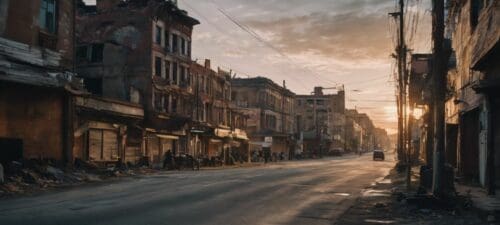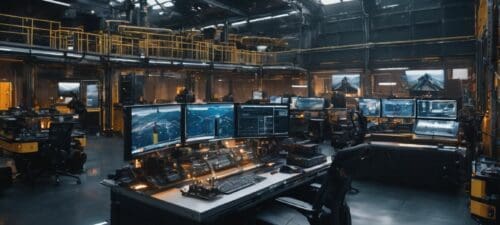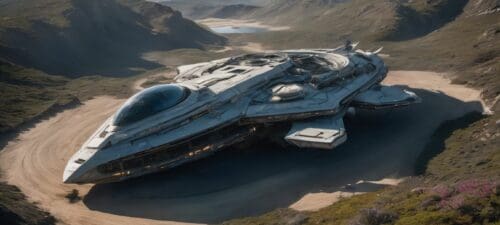Deadlock Alpha Impressions Competitive: How Valve’s Shooter Shapes Up
Updated On: August 23, 2025 by Aaron Connolly
Deadlock Alpha Competitive Overview
Deadlock’s competitive scene really just bubbled up from the alpha community. Players started organizing tournaments to fill the gaps Valve left open.
The game’s still in closed alpha, but grassroots competitions like Deadlock Fight Night already show off the kind of strategy people are hungry for.
Current State of Competitive Deadlock
Valve made ranked mode the only queue in Deadlock, so everyone’s pushed into more serious matches right away. Still, the system doesn’t have the competitive features MOBA fans usually expect.
Missing competitive features include:
- No pick and ban phase
- Random lane assignments
- Barely any pre-game coordination time
- No team composition planning
Top players noticed these issues and came up with their own fixes. Deadlock Fight Night stands out as the grassroots tournament that’s gotten the most traction so far.
This invite-only weekly event uses a king-of-the-hill setup. Champions defend their spot every week.
Organizers handle pick and ban phases by hand before matches, keeping things close to traditional MOBA style.
Each team bans one hero, then alternates picks. This makes the draft phase a real mind game, since teams have to react to surprises and build counter-strategies on the fly.
Valve’s Vision for Competitive Play
Valve seems to be intentionally keeping Deadlock’s competitive features pretty barebones during alpha. They stripped out a lot of the usual MOBA complexity to keep queues fast and the experience simple.
They ditched the typical three-minute pre-game phase you’d see in Dota 2. Instead, players have just a few seconds on a rooftop before getting tossed into random lanes.
Valve’s current approach focuses on:
- Faster matchmaking
- Less downtime between matches
- Quick hero selection
- Teams built automatically
This means there’s less time for planning or team coordination. You can feel the tension between Valve’s streamlined approach and the community’s craving for deeper competitive mechanics.
Valve hasn’t even officially announced Deadlock yet. They’re only talking through in-game updates.
So the competitive setup is still in flux—who knows what’ll change.
Community and Esports Hype
Since the alpha launch, Deadlock has racked up 15.52 million hours watched on Twitch. That’s not a small number, and it points to real hype around its competitive side.
Esports momentum signs:
- Pro tournaments already happening
- $10,000 invitational events on the calendar
- Content creators are jumping in to cover matches
- Teams forming well before release
The prohibition-era occult setting gives Deadlock a fresh style that stands out from the crowd. Mix that with shooter-MOBA gameplay and you’ve got something that’s grabbing attention.
But let’s be real—alpha builds still have stability issues. That’s a big headache for anyone trying to run serious tournaments.
Even with these technical hiccups, the community keeps building up the competitive scene. Pro players are putting in hours, working on strategies and forming teams.
It’s clear the grassroots scene is laying strong foundations for esports, as long as Valve eventually adds those core competitive features.
First Impressions from the Alpha Scene
Valve’s Deadlock alpha is buzzing among early testers, but not everyone’s on the same page about this shooter-MOBA hybrid. The invite-only system brings a mix of excitement and frustration, and the feedback shows a steep learning curve that’s splitting the community.
General Gameplay Feel
Early testers call Deadlock ambitious, though it’s still searching for its identity. The game blends hero shooting with MOBA staples like lane control and minion management.
Players can dash, double jump, and wall run. Sounds wild, right? But these movement options actually trip up a lot of average players.
Plenty of testers say the mix of twitch shooting and MOBA strategy is just too much at once.
If you’re not already into hero shooters or MOBAs, you’ll probably hit a wall. The learning curve is no joke.
Common tester complaints:
- Tutorial feels confusing
- Core mechanics aren’t explained well
- Too many systems to learn at once
- Hard to juggle shooting and strategy
Some players are into the genre mashup and have already started their own tournaments. But this excitement mostly comes from folks who already know MOBAs or shooters inside out.
Early Feedback from Testers
The community’s pretty divided. Experienced players dig the unique mechanics, but newcomers are overwhelmed by the complexity.
Positive feedback:
- Unique setting: Prohibition-era New York with occult vibes
- Ambitious genre mix
- Potential for real competition
Critical feedback:
- Visuals look a bit generic compared to other Valve games
- The game doesn’t make its goals clear
- Balance issues are everywhere (typical alpha stuff)
One tester even said the prohibition setting felt “wasted on a MOBA format.” Others just seem happy to see Valve trying something new.
Tournament organizers are already planning events, even though daily patches keep shaking things up. That’s a sign of real faith in Valve’s process—at least among the hardcore fans.
With updates rolling out so often, player opinions can change overnight. What’s annoying one day might be gone the next.
Access and Participation in the Alpha
Deadlock uses an invite-only system where current testers can bring in friends. This setup has caused all sorts of headaches for the community.
Access issues:
- Invites go out unevenly—some people wait forever, others get in right away
- Community channels get clogged with invite requests instead of real discussion
- Content creators are frustrated because they can’t cover the game
At launch, the invite system just didn’t work right. Tons of promised invites never showed up, so people waited around for weeks.
To participate right now:
- You need an invite from someone already in the alpha
- Your Steam account has to be in good standing
- You have to agree to give feedback
Reddit and Discord channels got swamped with people trading invites, not talking about gameplay. That really slowed down early community building.
Still, once people get in, they usually stick around. The alpha keeps a solid player base, even with all the bugs and constant changes.
Tournament Play and Events
Deadlock tournaments are already popping up—even though the game’s still in closed alpha. Players from all sorts of esports backgrounds are showing up for prize pools, and Valve even jumped in to back a $10,000 invitational.
Deadlock Prime Invitational
Valve surprised everyone by hosting a $10,000 invitational while Deadlock’s still in closed alpha. That’s a pretty bold move, showing Valve’s serious about competition, even if the game isn’t exactly stable yet.
The event got attention from both players and viewers. But running a high-stakes event during alpha? That raises some eyebrows about competitive integrity.
Game balance changes every couple of weeks, so strategies and hero strengths shift constantly.
Pros from other esports have jumped in. Names like Taimou and BigGoose from Overwatch League signed up for tournaments like “Fissure Underworld.”
Structure of Early Tournaments
Most Deadlock tournaments right now use pretty basic formats. Teams usually play best-of-one group stages, then move to best-of-three playoffs.
The Cursed Apple Clash at Red Bull Gaming Sphere had 48 players split into eight teams. Groups of four teams each played double elimination brackets.
Two teams from each group made it to playoffs.
Quick tip: Follow your favorite pro players on social media—they often announce tournament appearances there, since official info is scarce during alpha.
Tournament access is still locked down. Only players with alpha invites can play.
There’s a spectator mode, but you’ll only catch matches if streamers or organizers decide to share them.
Invited Players and Community Gatekeeping
The closed alpha setup naturally limits who can play Deadlock competitively. Only invited players get in, so the talent pool’s way smaller than in open games.
Players from all sorts of esports are joining tournaments. We’ve seen folks from Counter-Strike, Dota 2, Starcraft 2, and Age of Empires IV. That mix brings some wild strategic variety to the game.
Heads up: Info about tournaments is super limited in alpha. Most events happen in private Discords or just through word of mouth.
Team Buff Enjoyers is crushing early European events, with players like Lystic and Zerggy (UK) and ex-Overwatch League player Sharyk. Their quick success shows how fast top esports talent can pick up Deadlock.
Since it’s invite-only, plenty of talented players can’t even try out. That’ll probably change once Valve opens things up, and the whole competitive scene might get a shakeup.
Meta Development in Alpha
Alpha testing is making Deadlock’s competitive scene shift fast as players find new strats and Valve keeps tweaking hero balance. Constant updates and the experimental vibe make it tough for competitors trying to master the game.
Impact of Frequent Patches
Valve pushes out Deadlock updates several times a week during alpha. These patches can totally change hero abilities, item costs, or even map layouts.
Patches usually bring:
- Hero damage tweaks (sometimes 10–20% swings)
- New items or full-on item reworks
- Map geometry changes that mess with positioning
- Ability cooldown shifts
Competitive players have to relearn things all the time. A hero that’s top tier one week might be useless after the next patch.
Teams can’t count on set compositions for more than a few days. Adaptability matters way more than memorizing set plays.
A lot of pro players spend 2–3 hours every day just testing patch changes. They focus on learning new numbers and how abilities interact, not so much on perfecting long-term team strategies.
Hero Power Variability
Alpha balance is wild—heroes swing from overpowered to trash all the time. Some characters go from a 35% win rate to 65% in just a couple patches.
Current tier chaos:
- Heroes get major reworks every 2–3 patches
- New abilities pop in and out within days
- Damage scaling experiments cause temporary OP picks
- Movement skills get tweaked to fit new map flows
Competitive teams don’t bother building around a single hero. Instead, they look for players who can flex to whatever’s strong that week.
The best alpha teams focus on mechanical skill instead of hero mastery. If you can aim and position well, you’ll adapt faster than someone who just knows one character inside out.
Some heroes stay solid no matter what. Usually, those are the ones with simple, skill-based abilities that don’t rely on weird interactions.
Adapting to Shifting Strategies
Teams have started using short practice cycles to keep up with the meta. Most squads review strategies weekly instead of monthly, which is what you’d see in older games.
How teams adapt:
- Daily theory-crafting after each patch
- Players swap roles as needed
- Focus on fundamentals, not just specific tactics
- Quick testing of new strats from the community
Communication is huge when old strats stop working. Teams that adapt fastest share info as soon as they find new combos or counters.
Players keep close tabs on forums and Discord for the latest meta tricks. With a small alpha player pool, new tactics spread fast once someone cracks the code.
Successful teams treat every big patch like a mini-reset. They spend the first day testing solo, then regroup to talk about what works and what doesn’t.
Competitive Gameplay Fundamentals
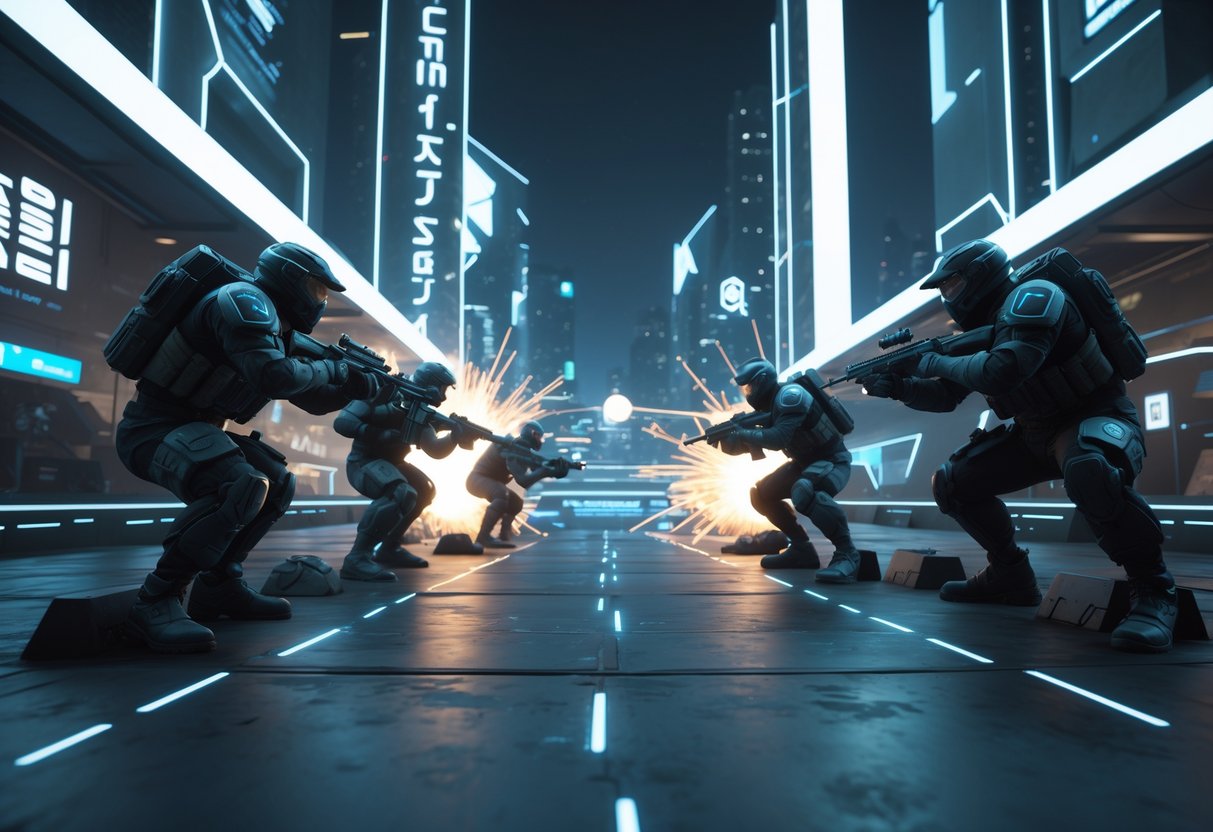
Deadlock’s competitive scene lives and dies by precise timing and solid team play across three phases. If you want to win, you’ve got to nail map control early, manage resources well in the mid-game, and pull off flawless team coordination when it matters most.
Early Game Map Control
Central positioning wins games from the opening seconds. Heroes like Grey Talon and Viscous can grab the central high ground within 15 seconds of match start. That spot gives teams instant vision and lets them reach both healing troopers right away.
The reward? It’s huge. Teams that hold this ground rack up a 500-soul advantage by the 2-minute mark. That’s enough for some real equipment upgrades before the first big team fights hit.
Map awareness really matters here. We keep an eye on enemy movements while holding aggressive positions near objectives. Good teams know how to walk the tightrope between risk and reward.
Resource tracking starts right away. Competitive players pay attention to ammo, ability cooldowns, and health pickup spots at all times. This helps them avoid those painful retreats during early fights.
Mid Game Resource Management
Ultimate timing at the 5-minute mark shapes mid-game outcomes. Power-ups spawn on a schedule, so teams need to sync their strongest abilities with these moments.
Viscous’s ultimate shines in these situations. If you land it well, you can zone enemies off bridge power-ups while your team scoops up both buffs. That kind of play can snowball into a late-game advantage.
Resource use turns into a chess match. If you force the enemy to burn ultimates defensively, you get a window to grab objectives. Teams that waste resources on bad pushes end up exposed on the next power-up spawn.
Equipment timing is critical. Buy upgrades too early and you’re weak when it counts; wait too long and you miss your chance to press the lead.
Late Game Team Coordination
One mistake can end the game when respawn timers stretch past 30 seconds. Every decision and ability matters, and team-wide communication becomes non-negotiable. Individual heroics don’t mean much without a plan.
Wave management suddenly becomes everything. Teams need to control creep waves to keep map pressure up while grouping for objectives. If you mess up wave control, you split focus and risk getting caught out.
Objective calls set the best teams apart. Knowing when to trade, contest, or skip a fight takes real game sense.
You’ve got to set up communication protocols before the late game arrives. Teams that build clear callout systems and decision trees pull off clutch plays way more often than groups relying on solo talent.
Essential Strategies for High-Level Play
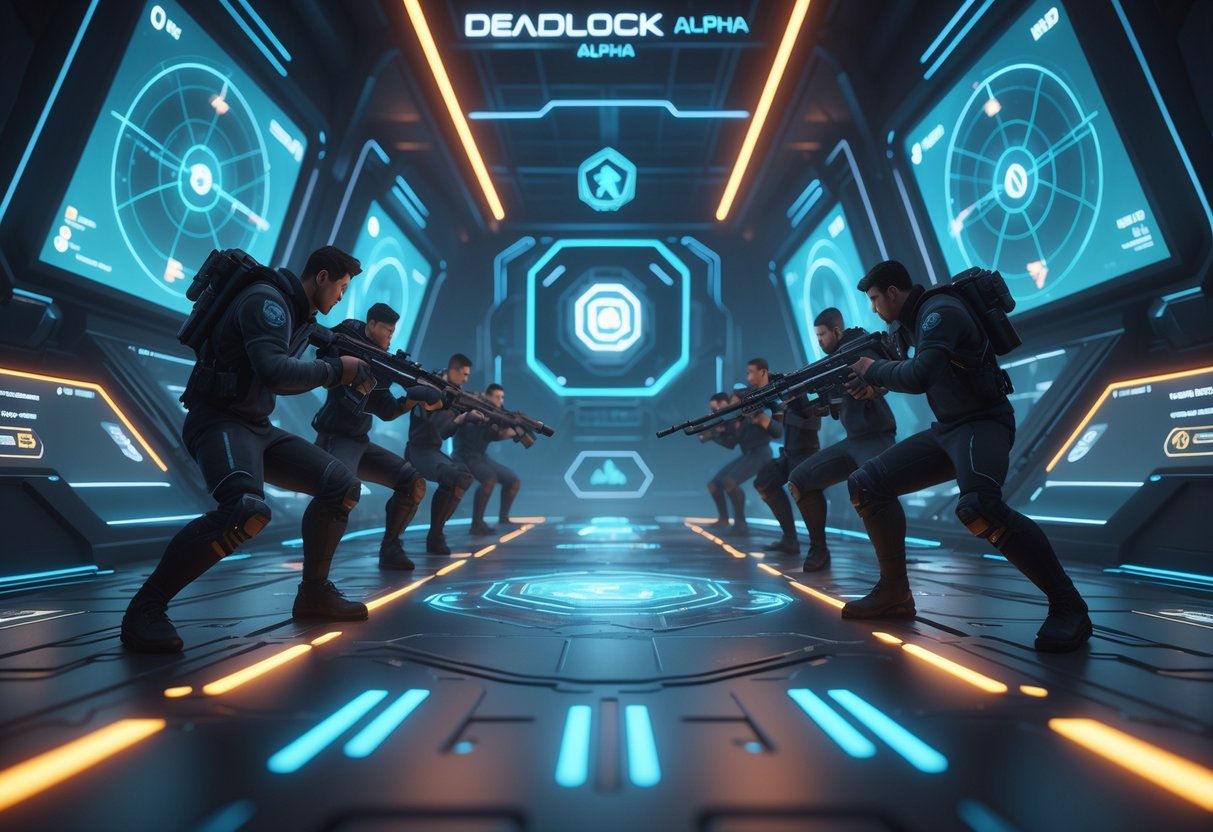
If you want to climb in Deadlock’s competitive scene, you’ll need sharp timing with ultimates and power-ups. Knowing when to push or play it safe is what separates casuals from serious players.
Ultimate and Power-Up Timing
Kelvin is everywhere at the top levels. He gets picked or banned in every match because his ultimate locks down objectives. His ice path gives your team fast rotations across the map.
Pro players always go for the mid-boss early. The buff gives you major pushing strength in every lane. Use melee attacks for more damage when you’re grabbing objectives.
Power-up coordination is a big deal. Stand right on the grates where power-ups spawn so more than one teammate can grab the buff together.
Rapid Recharge is a game-changer. It refreshes all your abilities and gives you an extra charge, so you can surprise opponents during key fights.
Time your Soul Urn deliveries with care. Ivy can fly teammates across the map safely, and Kelvin’s ice path lets you escape after a successful drop.
Magic Carpet lets heroes like Seven, who have strong area abilities, reposition in unpredictable ways. You can pull off sneaky ultimates from spots nobody expects.
Aggressive vs Defensive Approaches
Focus on objective damage when the enemy is out of position. Apply steady pressure to Guardians and Walkers instead of chasing low-value kills.
Punching does more DPS than shooting on objectives like Guardians and the mid-boss. Melee attacks also hit multiple targets at once.
Deny souls fast by shooting or punching soul orbs as soon as enemies drop them. This keeps the other team from picking up critical resources. Meleeing soul orbs is also less risky than missing a skill shot.
Counter airborne threats like Vindicta with knockdown skills. Once she’s grounded, she’s slow to recover, and you can finish her off.
Parry Guardians to stun them for a few seconds. You take less damage, and your Troopers can push lanes harder.
Defensive positioning on high ground lets you slide and shoot for infinite ammo. This trick is great for chipping away at Guardians from a safe spot.
Team Synergy and Communication
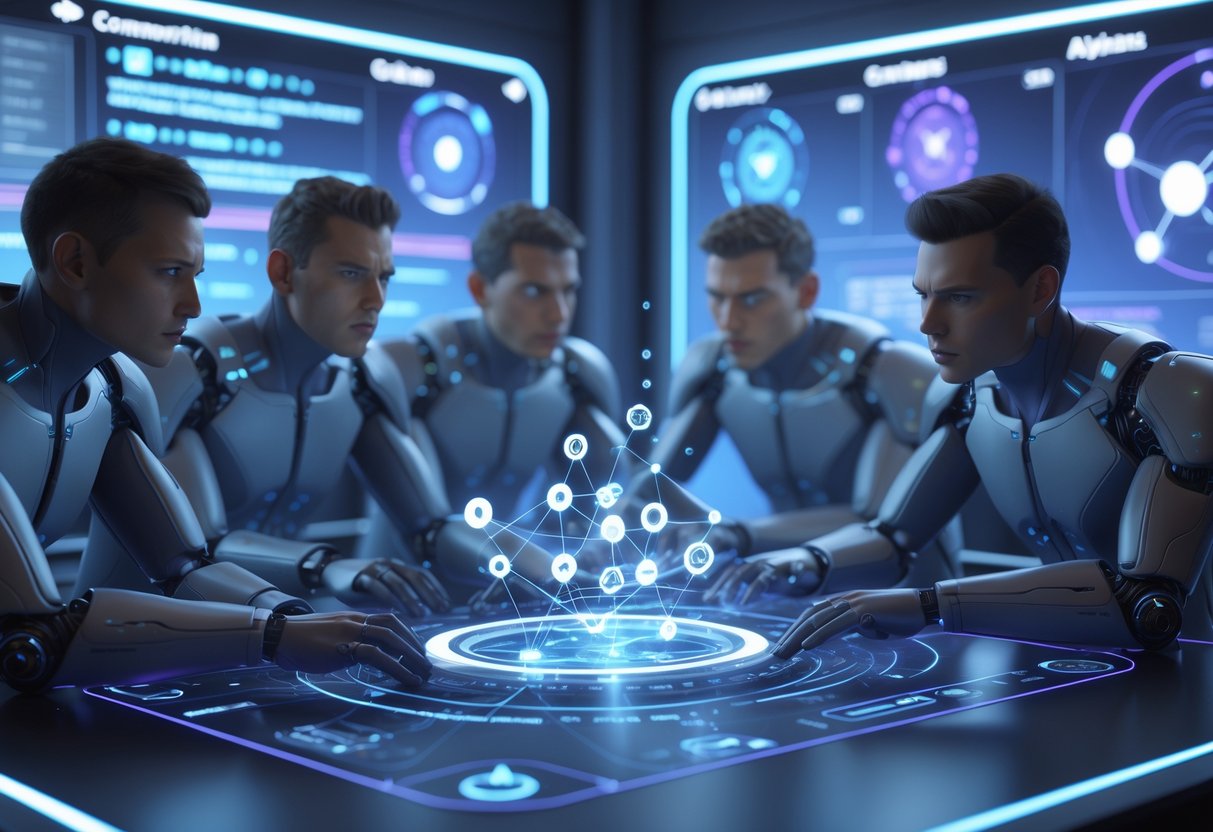
Top Deadlock teams always coordinate hero abilities and pick smart team compositions. These two things really make the difference when you need to pull off complicated plays under pressure.
Coordinating Hero Abilities
Timing hero abilities is everything in Deadlock. The best teams drill ability combos until they barely have to think about it.
Designate one player as the initiator. That person calls the engage and tells everyone which abilities to chain. For example, Dynamo pulls everyone in with his ultimate, and teammates instantly follow up with area damage.
Voice comms are huge here. Keep callouts short—“Dynamo ulting!” or “Follow stun!”—because long explanations just slow you down.
Practice should stick to just 2-3 core combos instead of trying to master everything. Teams that get a few reliable chains down usually win more fights than those who spread themselves thin.
Quick tip: Spend 15 minutes each scrim just running the same combo until it’s automatic.
Composing Balanced Teams
Role distribution is the backbone of team composition in Deadlock. You need damage, support, and frontline heroes who can take hits.
Try the flexible 2-2-2 structure: two damage, two support/utility, and two tanks. This setup lets you adapt to whatever the enemy throws at you.
Hero synergies often matter more than raw skill. Bebop’s hook pairs best with burst damage teammates, and healing supports can play super aggressively behind a strong frontline.
Counter-picking gets more important as you learn the meta. If the enemy stacks close-range heroes, pick area denial champs to mess with their plans.
Teams should practice with different comps, not just one. The top squads can swap between aggressive, defensive, and balanced lineups based on what’s happening in the match.
Hero Balance and Tier Perceptions
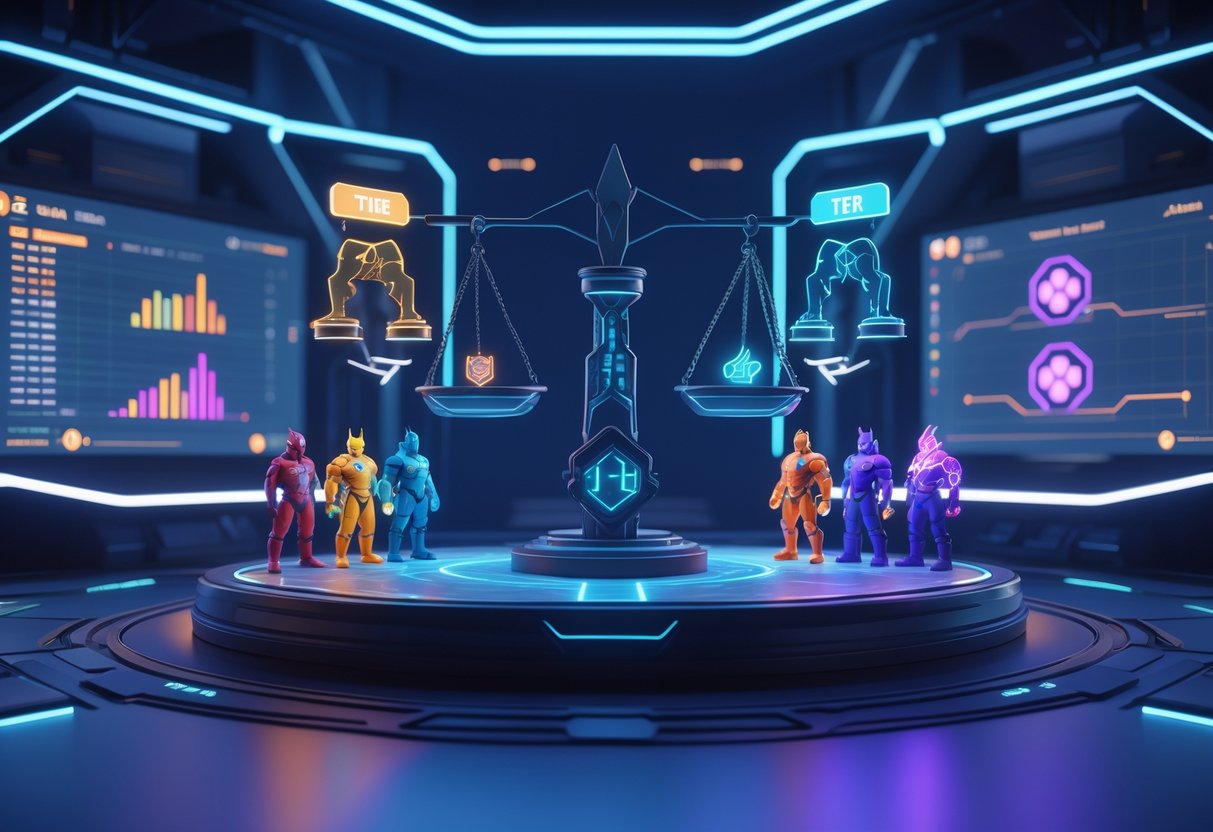
Deadlock’s alpha is surprisingly balanced, with most heroes sitting in the 45–55% win rate range. Still, three stand out: Abrams, Warden, and Lash.
Popular Heroes in Competitive Alpha
Abrams tops the charts as the scariest melee fighter. His life-steal and tankiness make him a nightmare if you know what you’re doing.
Players often say they need specific counter-items just to survive against a good Abrams. His mix of durability and raw damage lets him swing fights by himself.
Warden brings nasty crowd control. His stun can lock down enemies, and his ultimate hits hard while healing him.
He also shrugs off debuffs, which gives him a toughness edge other heroes don’t have.
Lash is all about mobility and chaos. His crowd control lets him toss enemies around during fights.
A skilled Lash player can make the battlefield feel unpredictable for the other team. He’s tough to master, but the payoff is huge.
Power Rankings and Tier Lists
Competitive data shows clear tiers after thousands of matches:
| Tier | Heroes | Win Rate Range |
|---|---|---|
| S-Tier | Abrams, Warden, Lash | 52-55% |
| A-Tier | Grey Talon, Kelvin, Seven, Shiv | 50-52% |
| B-Tier | Bebop, Dynamo, Haze, Ivy, Pocket, McGinnis, Viscous | 48-50% |
| C-Tier | Infernus, Lady Geist, Paradox, Vindicta, Wraith | 46-48% |
Yamato is a weird case. She shows up in several tier lists, even though her stats are mixed. At higher ranks, she dominates because less experienced players can’t counter her.
Wraith has some niche late-game value. She can solo guardians and walkers, so even with lower win rates, she still sees play.
Overall, the tier spread is pretty tight. Valve’s balance team seems to be keeping things fair, even in alpha.
Technical Challenges in Tournament Play
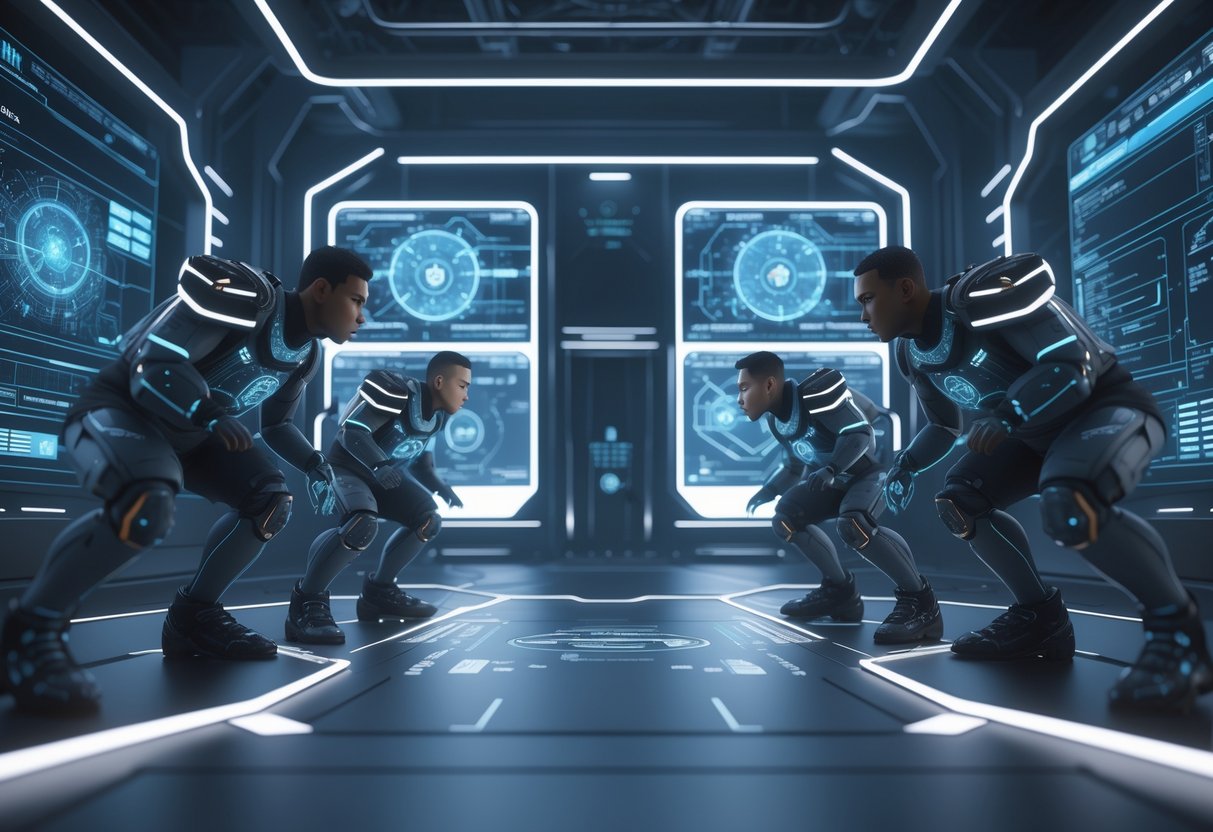
Alpha tournaments are a mess right now with crashes and broken features. Server instability can ruin matches at the worst possible times.
Instability and Glitches
Deadlock’s alpha creates real headaches for competitive play. Players deal with mid-match crashes that can wipe out an entire game.
Some character abilities bug out and give unfair advantages. Heroes can suddenly go from balanced to busted after a patch.
The meta shifts wildly every few weeks, making it tough for teams to practice and prepare.
Community feedback says, “Technical issues get worse late-game.” Problems seem to spike when the stakes are highest.
Players also complain about character balance. Bebop, for example, swings between overpowered and underwhelming with each update.
Server Issues Affecting Matches
Valve’s servers just can’t keep up under tournament stress. Lag spikes and disconnects hit during crucial moments.
Late-game is especially rough. Servers crash more often when the action gets chaotic and everyone pops abilities.
Heads up: Tournament organizers say demo files often corrupt, making it a pain to review matches or create highlights.
Connection quality varies by region, so some players get a smoother ride than others just based on where they live.
Spectator mode is buggy, too. Casters and observers struggle with broken tools during live games.
All these server issues force organizers to pause matches a lot. Technical delays break the flow for viewers who want a clean show.
Community Concerns and Inclusivity

Deadlock’s alpha has sparked big discussions about fair access and how Valve handles the MOBA-shooter’s early scene. These conversations will probably shape how inclusive the competitive side gets.
Access for Up-and-Coming Players
Getting into Deadlock’s competitive scene is tough for newcomers. The game’s still invite-only during alpha, so that’s a big wall right away.
A lot of skilled MOBA players get locked out just because they don’t have the right connections. This kind of gatekeeping could mess with the scene’s long-term health.
Current access issues include:
- Invite-only alpha shrinks the player pool
- No clear path for talented new players
- Community feedback is mostly positive, but representation is thin
Steam forums show mixed feelings on balance and accessibility. Some players feel lost with the item system and unclear roles.
If Valve doesn’t set up proper onboarding, tournaments might only feature early-access players. That could leave the competitive scene dominated by streamers and content creators instead of the best talent.
Exposure and Marketing Initiatives
Valve’s marketing approach for Deadlock has been oddly quiet. Compared to most game launches, they haven’t exactly rolled out the red carpet. We’ve barely seen any official promotion, even though alpha player counts are pretty high.
Honestly, this makes it tough to build an inclusive competitive community. When marketing doesn’t reach a broad mix of gamers, the player base can start to feel a bit closed off.
Marketing gaps affecting inclusivity:
- They haven’t really reached out to underrepresented gaming communities.
- There’s no clear competitive roadmap out in the open.
- Valve hasn’t announced much in the way of official tournaments.
Right now, word-of-mouth is doing most of the heavy lifting. That naturally favors folks already plugged into gaming circles. It can leave out casual players who might actually have real potential, but don’t have those industry connections.
If Valve wants truly inclusive marketing, they’ll need to reach beyond the usual suspects. Other games have done well by partnering with diverse content creators and running entry-level tournaments anyone can join.
People testing Deadlock early on say the game could use way better communication. Newcomers need clearer info about roles, mechanics, and how to get competitive if they’re from different gaming backgrounds.
The Future of Deadlock Esports
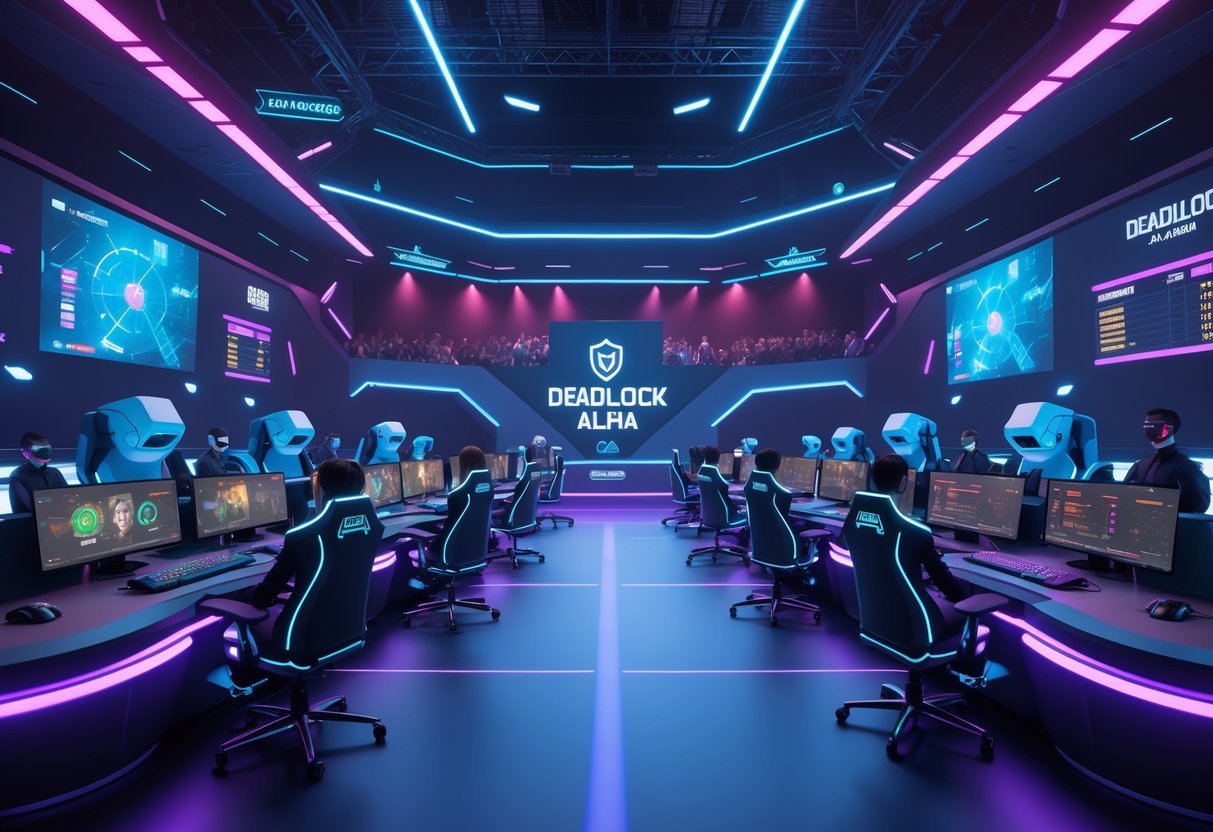
Deadlock’s esports scene is showing real grassroots momentum—even though it’s still just in alpha. Community tournaments have already pulled in competitive players from other big games.
The game’s long-term future? That’ll hinge on how much Valve wants to invest and the choices they make along the way.
Potential Growth after Alpha
The numbers are kind of wild. Deadlock peaked at 170,000 concurrent players in September 2024. Now, it’s holding steady at about 10,000 active players.
Current Tournament Activity:
- Deadlock Fight Night (community-run)
- Collegiate competitions
- $10,000 Deadlock Prime invitational
- Various grassroots events
We’ve seen professional players from Overwatch 2 and other esports jump ship and announce they’re moving to Deadlock. That says a lot about the game’s core mechanics and its appeal to serious competitors.
Key Growth Factors:
- Viewer engagement: 15.52 million hours watched on Twitch during alpha
- Streamer interest: Big-name content creators are hyping the game
- Community investment: Players are running their own tournaments, even without official support
There’s this interesting mix of MOBA strategy and shooter mechanics. The movement system, especially, really separates the veterans from the newbies and gives competitive players a clear path to get better.
Valve’s history with Counter-Strike and Dota 2 makes me feel pretty confident they know how to support a competitive scene. But honestly, timing is everything if they want to keep the hype alive.
Long-Term Competitive Prospects
Deadlock’s got a real shot—but the window’s not going to stay open forever. It needs a full release by Q4 2025 if it wants to hang with fast-rising titles like Marvel Rivals.
Essential Development Areas:
- Observer tools: The current spectating setup? It needs a lot of work.
- Balance consistency: Regular meta changes are fine for now, but they’ll need to settle things down for real competition.
- Infrastructure support: Players want official tournament circuits and real prize pools.
The game’s got strategic depth on par with established MOBAs. But it also feels way more approachable, like a hero shooter. Valve just added four new heroes and cut lanes from four to three, which shows they’re still tweaking the basics.
Competitive Viability Checklist:
- ✅ High skill ceiling with movement mechanics
- ✅ Strategic team-based gameplay
- ✅ Active grassroots community
- ⏳ Needs better spectator features
- ⏳ Needs more consistent balance updates
If Valve brings Deadlock to consoles or mobile, the player base could explode. Of course, that only works if the ports are actually good.
Warning: If the alpha drags on too long, people might lose interest. Valve really needs to be upfront about release dates to keep community investment and tournament organizers on board.
Deadlock has the potential to become Valve’s third big esport, right up there with Counter-Strike and Dota 2. But honestly, the next year will make or break it.
Frequently Asked Questions

Players have mixed feelings about Deadlock’s balance during alpha. Most of the feedback is positive, but there are definitely some concerns about certain mechanics.
The competitive community seems pretty interested in this MOBA-shooter hybrid. Some streamers, though, can’t quite agree on the gameplay experience.
What are players saying about the balance in Deadlock Alpha?
Most players say Deadlock feels pretty balanced in alpha. On Reddit and in Deadlock-focused groups, the mood is mostly upbeat.
Some folks say the game already feels playable, even at this early stage. That probably means Valve’s spent a lot of time fine-tuning the basics before letting testers in.
The high player count during alpha tells me people are finding the balance good enough to stick around. Still, a few players wish the mechanics were a bit friendlier for newcomers who haven’t played Counter-Strike or Dota 2.
How does the competitive scene react to Deadlock’s gameplay mechanics?
Pro esports orgs are already paying attention to Deadlock. Teams like Tundra Esports and Team Spirit are apparently getting ready to sign rosters—even though the game isn’t out yet.
The MOBA-shooter mashup pulls in competitive players from both genres. Plenty of Dota 2 veterans have jumped over and brought their strategic brains with them.
Early tournaments like the BB Deadlock Cup drew solid viewership. That event alone racked up 219.2K hours watched and peaked at 36.3K viewers, which is impressive for an alpha.
What are the initial reviews saying about Deadlock post-release?
Deadlock’s still in alpha, so there’s no official release yet. Early impressions from testers are kind of all over the place.
Some reviewers call it a “mixed bag”—ambitious, but still searching for its identity. The blend of shooter and MOBA elements gets people excited, but also leaves some scratching their heads.
Popular streamer Shroud called Deadlock “probably the best third-person shooter I’ve ever played” because of its depth and nuance. On the flip side, summit1g didn’t hold back, saying he “actually hate[s] this game.”
Are there any common strategies emerging in Deadlock competitive play?
Competitive guides keep pointing to three things: map control, resource management, and team coordination. It’s classic MOBA stuff, just adapted for a shooter.
Players say you really need to master every phase of the game. Even experienced gamers find the strategic depth takes real time to learn.
Competitive players seem to love the hero skill trees. The way each character progresses opens up all sorts of strategies, and teams are still figuring out what works best.
What do gamers think about the level design and art style in Deadlock?
Honestly, we haven’t seen much feedback about Deadlock’s art style or level design in current alpha chats. Most players are way more focused on gameplay mechanics and balance right now.
Alpha testing usually means the visuals aren’t final anyway. Art can change a lot before launch.
Players seem to care more about how the maps play strategically than how they look—at least for now.
How is the community responding to the fairness of the game Deadlock?
The invite-only alpha system has stirred up mixed feelings in the gaming community. Some players actually like how Valve takes things slow and tries to build hype through word-of-mouth.
But honestly, a lot of folks feel pretty frustrated by the limited access, especially since so many people want to check out Valve’s new project. The invite system basically depends on current players inviting their friends, so it kind of spreads out in this “spiderweb” way.
From what I’ve seen in community chats, most alpha testers say the core gameplay feels fair and pretty engaging. Player retention looks good so far, so the game mechanics must feel balanced enough to keep people coming back.






